Abstract
1. In cats anaesthetized with intraperitoneal pentobarbitone sodium, three regions of the cerebral ventricles, the third ventricle, the inferior or the anterior horn, were perfused with artificial c.s.f. and the effluent was tested on the fundus strip of the rat's stomach.
2. Effluent from all three regions contracted the fundus strip. The contractions were due to at least two substances as revealed by treatment of the strip with 2-bromolysergic acid diethylamide (BOL). The contractions that were sensitive to BOL are attributed to 5-hydroxytryptamine (5-HT) whereas the BOL resistant contractions appear to be due to an unknown hydroxy acid related to irin or the prostaglandins.
3. The contractions produced by effluent collected from the third ventricle were due wholly or mainly to 5-HT, those from the inferior horn to the unknown hydroxy acid, and those from the anterior horn to both substances in varying proportions. In addition, some samples of effluent from the third ventricle seemed to contain catecholamines as well.
4. The 5-HT in the effluent from the third ventricle is thought to be derived from the hypothalamus. The amounts assayed in 1 ml. effluent—the volume collected during 10 or 20 min perfusion—varied between 0·4 and 12 ng 5-HT. Output of 5-HT was initially high, then usually decreased but sometimes increased again during prolonged perfusion when temperature began to rise as anaesthesia lightened or when additional pentobarbitone sodium was given intravenously.
5. When perfusion of the third ventricle was continued after death the 5-HT content in the effluent increased 3 to 24-fold during the first hour and then gradually declined. This post mortem rise in 5-HT output suggests an abnormal state of release of 5-HT from the hypothalamus. The theory is discussed that the same may happen in certain cases of brain injury and that the abnormal release of 5-HT would explain the pyrexia and shivering seen in such cases.
6. The intraperitoneal injection of 5-hydroxytryptophan greatly increased the output of 5-HT in the effluent from the perfused third ventricle but only when this precursor of 5-HT was injected in large doses which caused respiratory arrest thus necessitating artificial ventilation. Upon the injection of 150 mg/kg the output of 5-HT rose to 90 ng/ml. and a further rise to 180 ng/ml. occurred when perfusion was continued after death.
7. It was not possible to establish a relation between the presence of the hydroxy acid in the effluent from the inferior horn and neuronal activity.
8. The 5-HT detected in the effluent from the anterior horn is assumed to have been released from the caudate nucleus.
Full text
PDF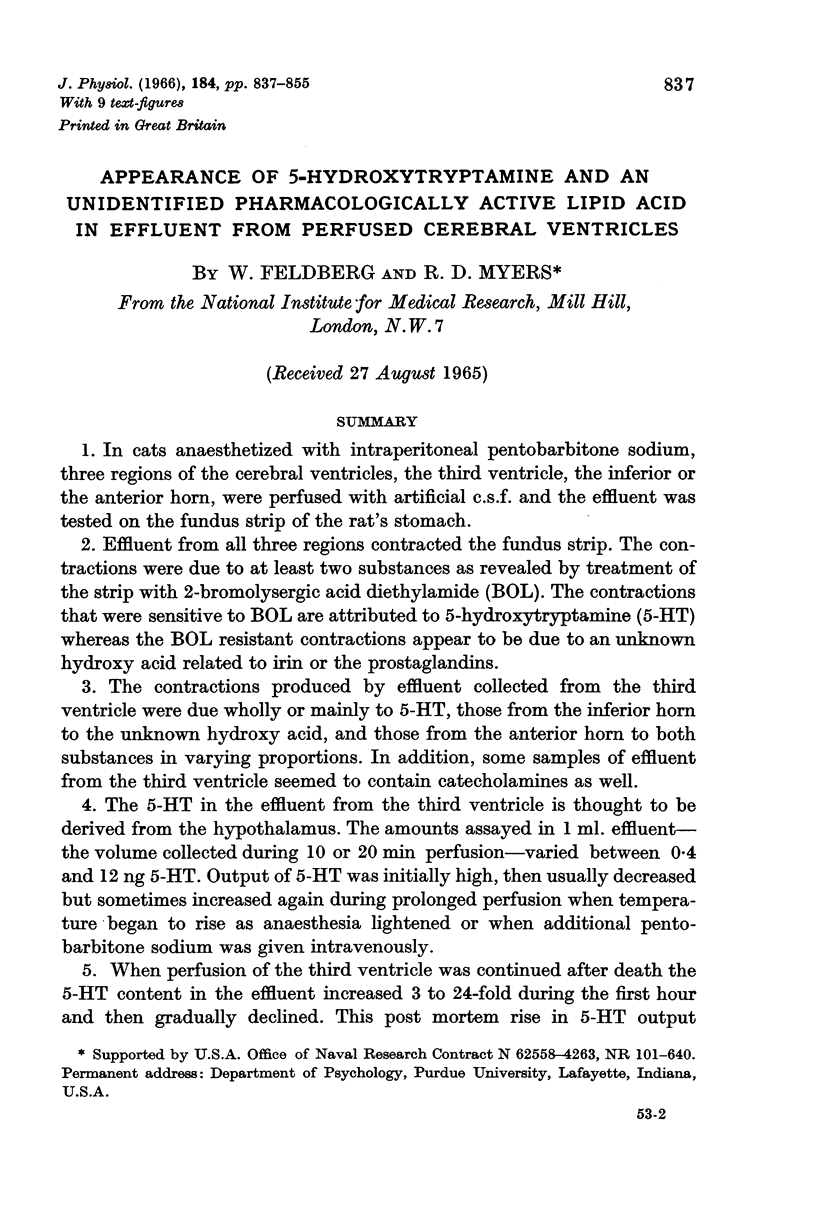
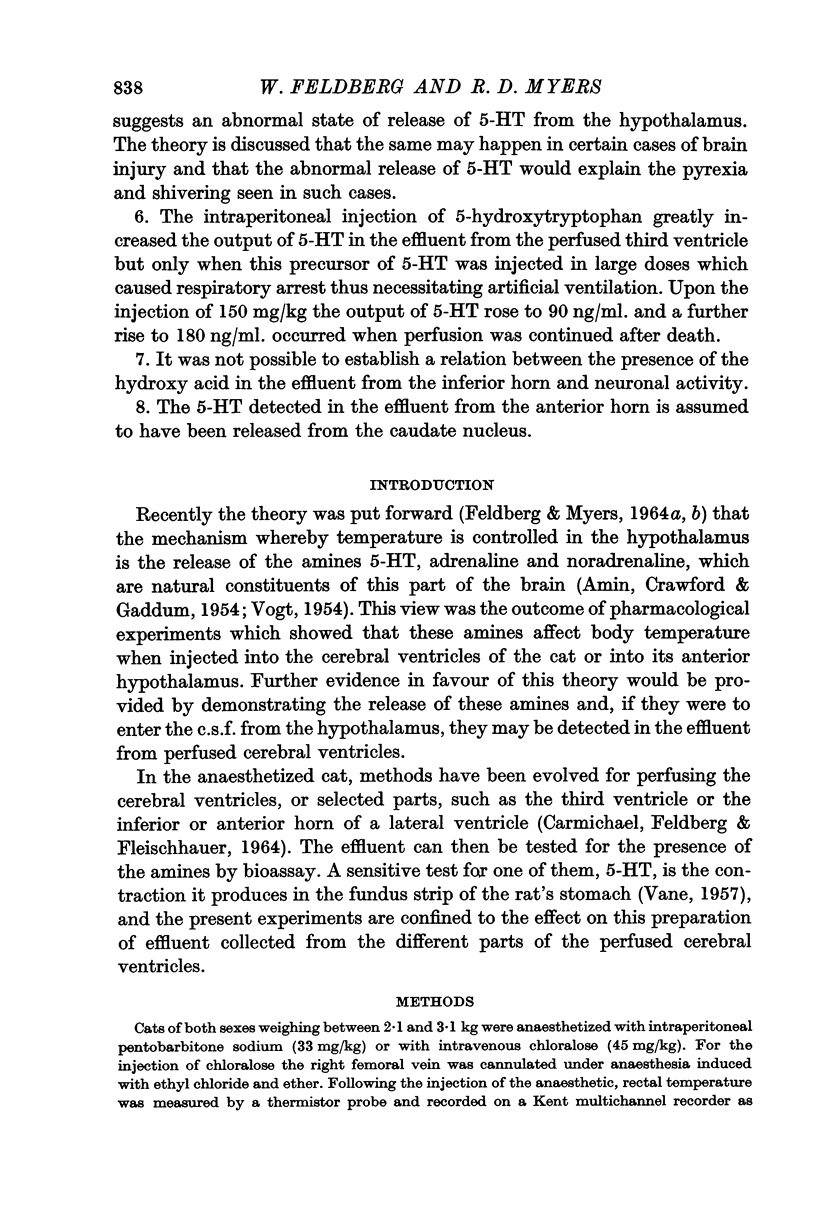
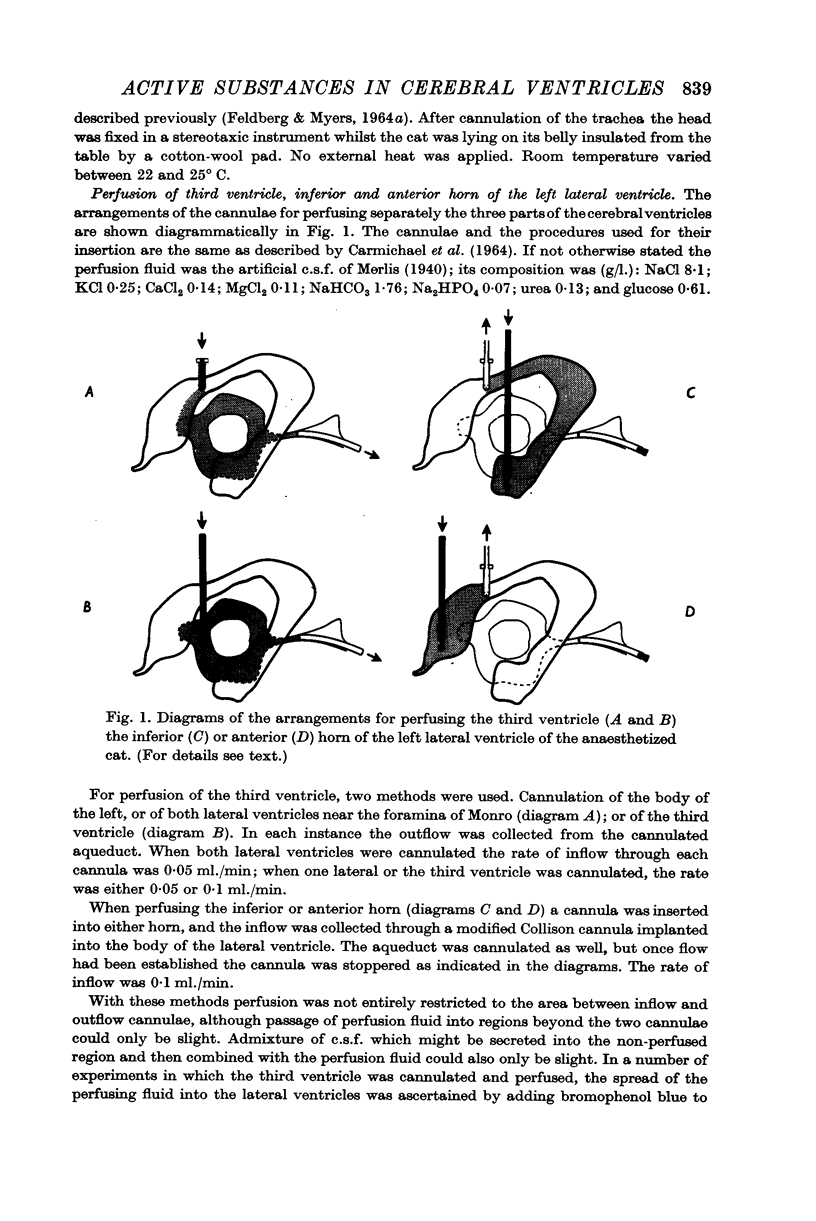
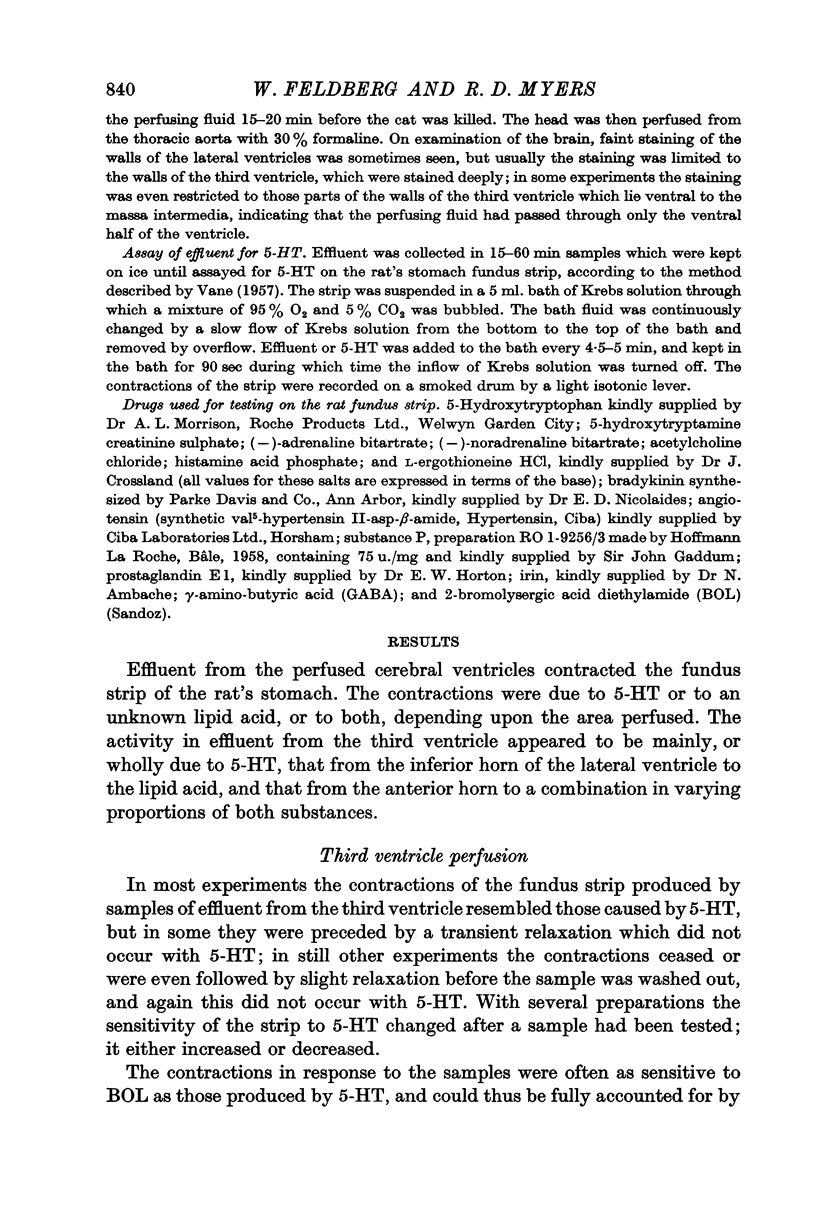
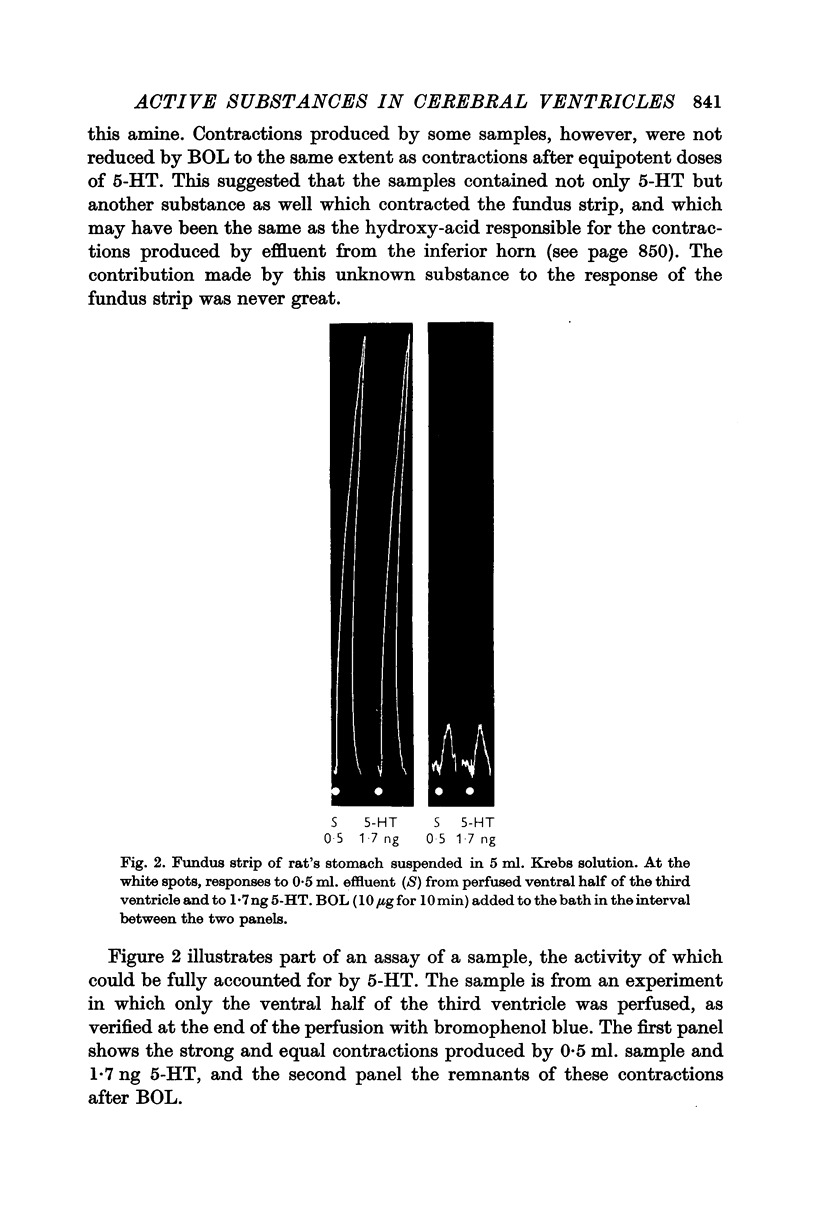
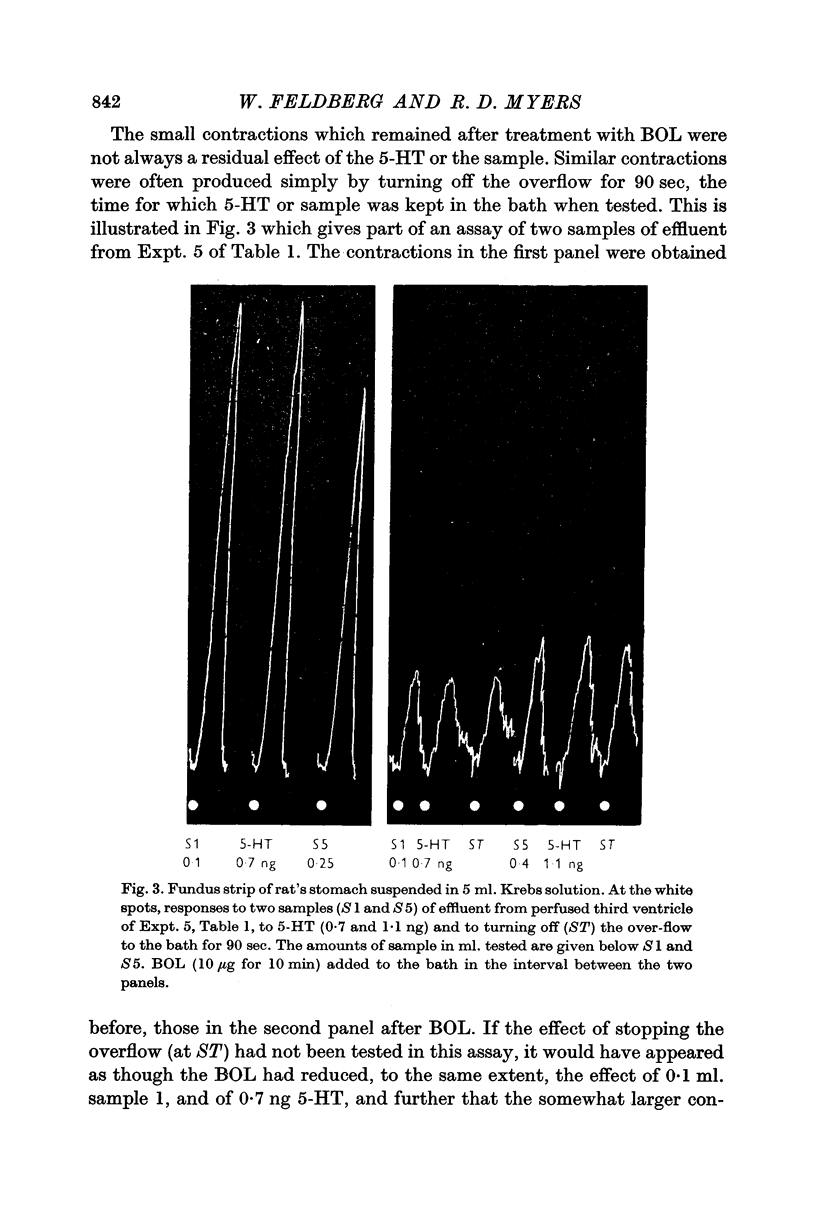
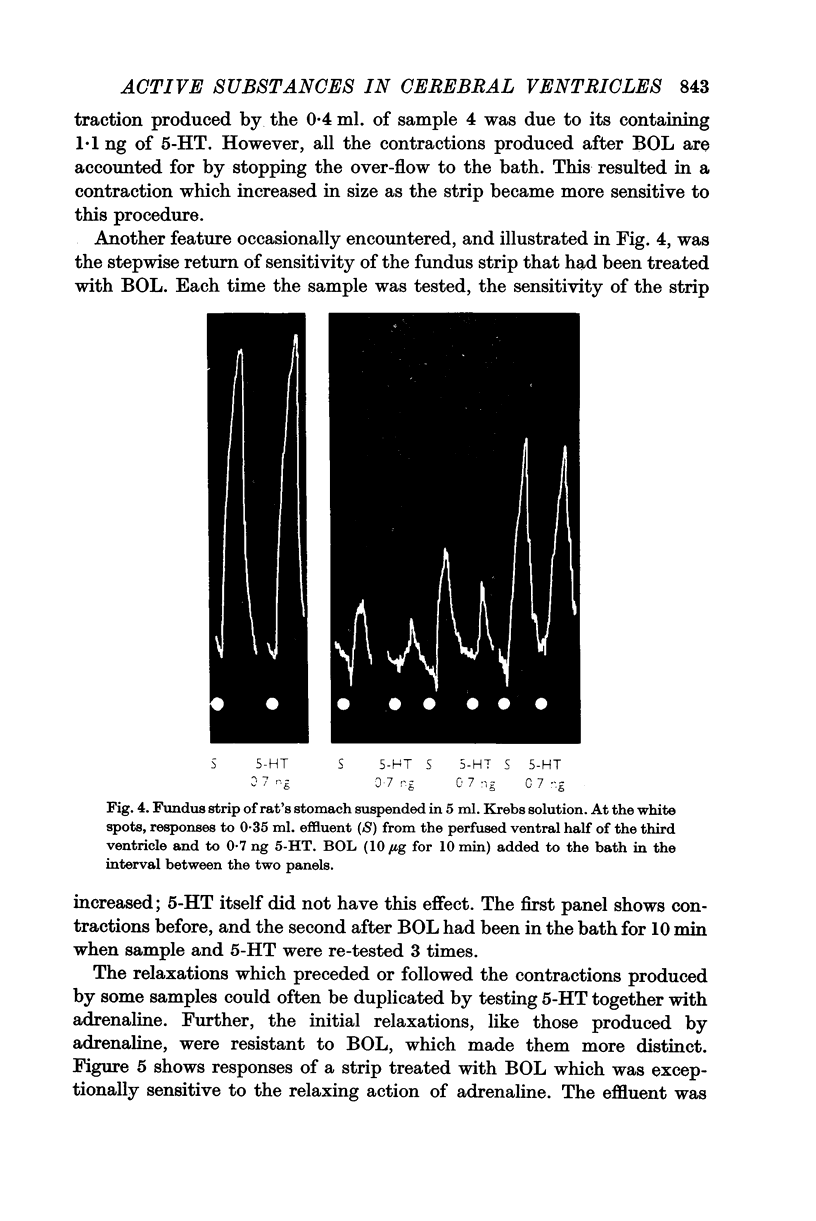
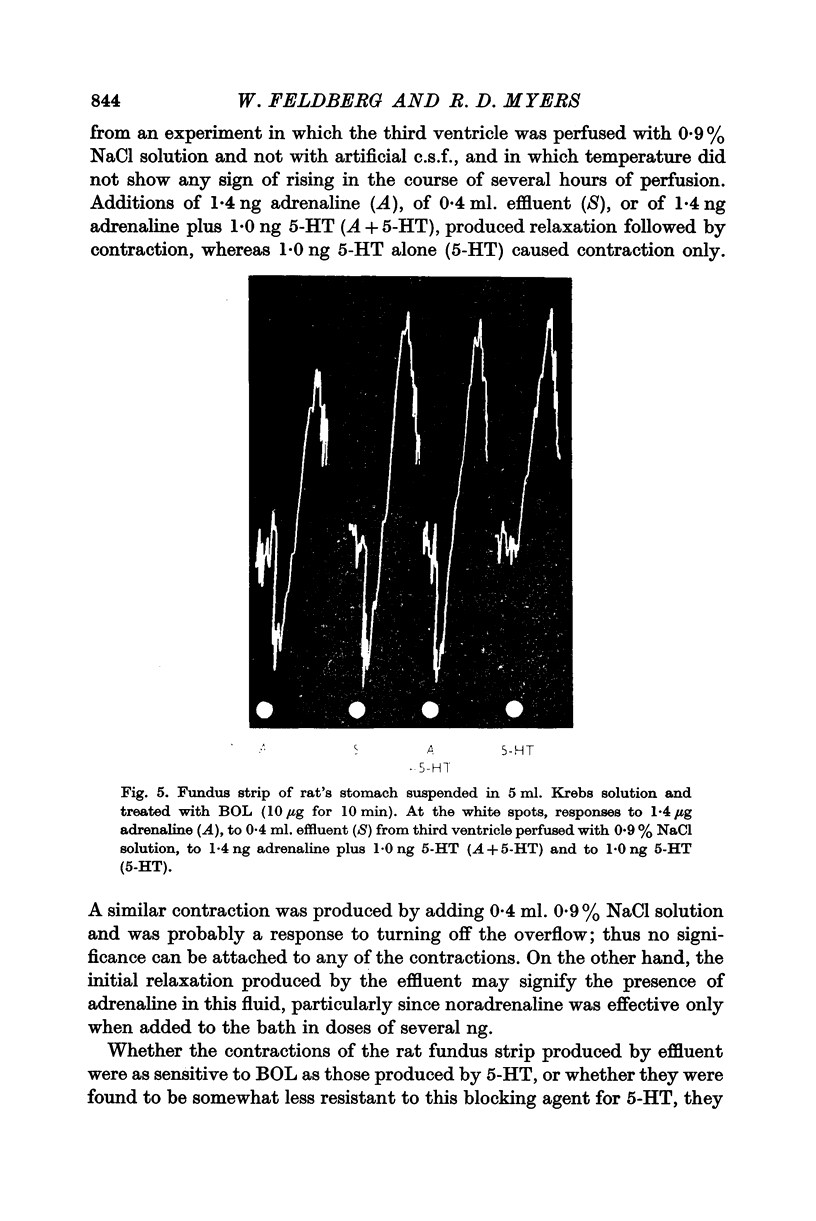
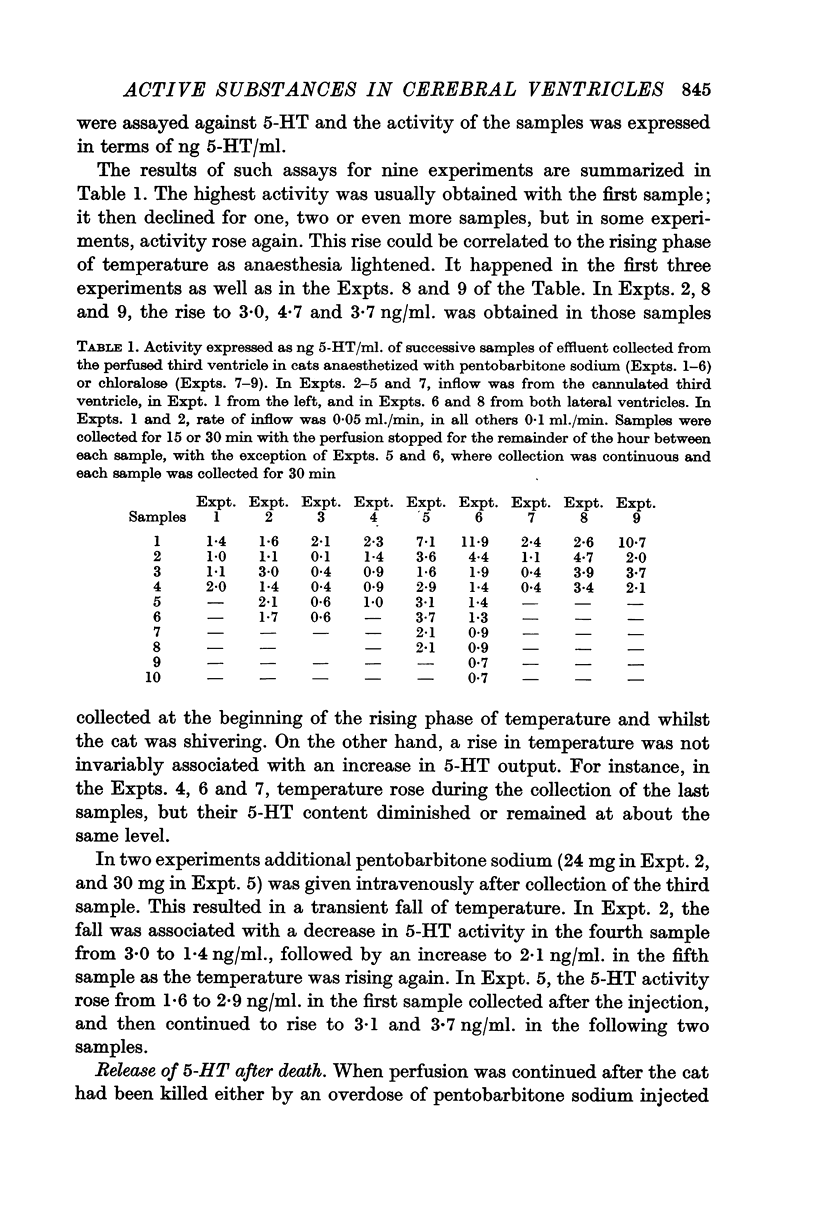
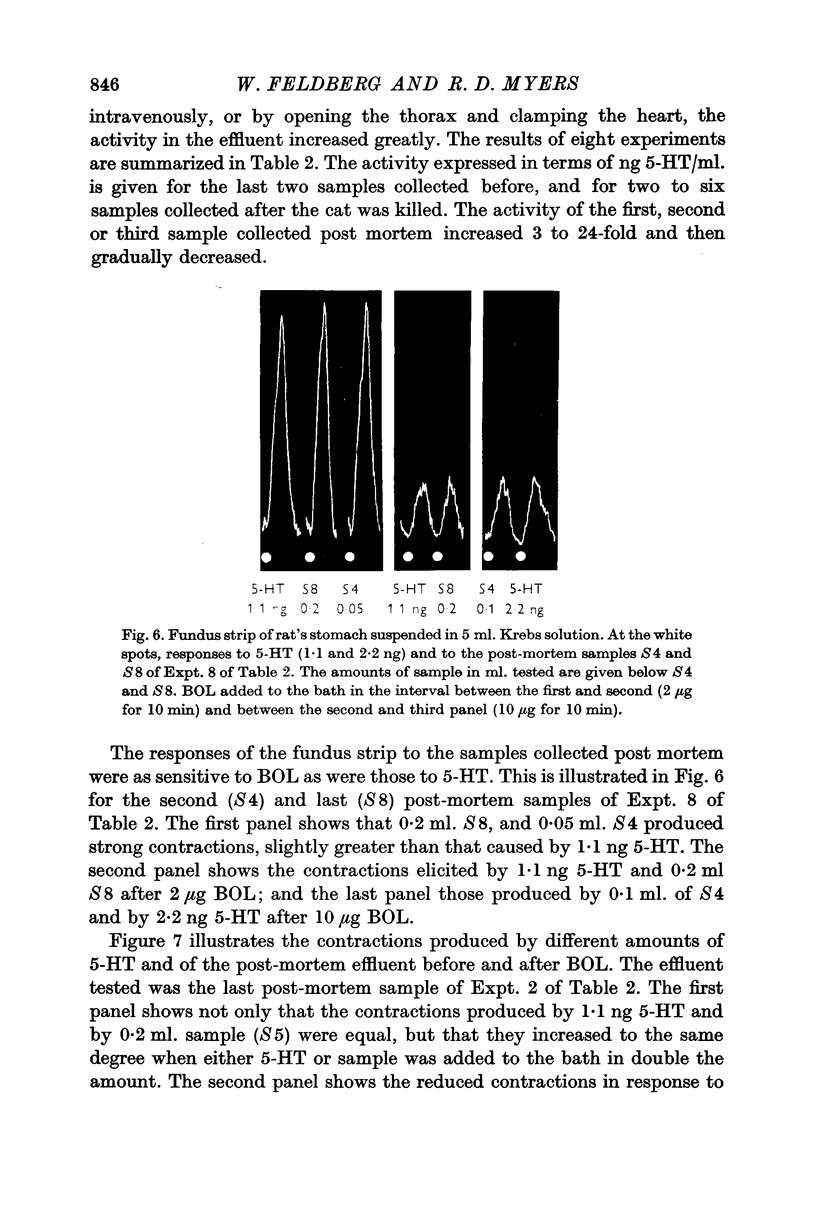
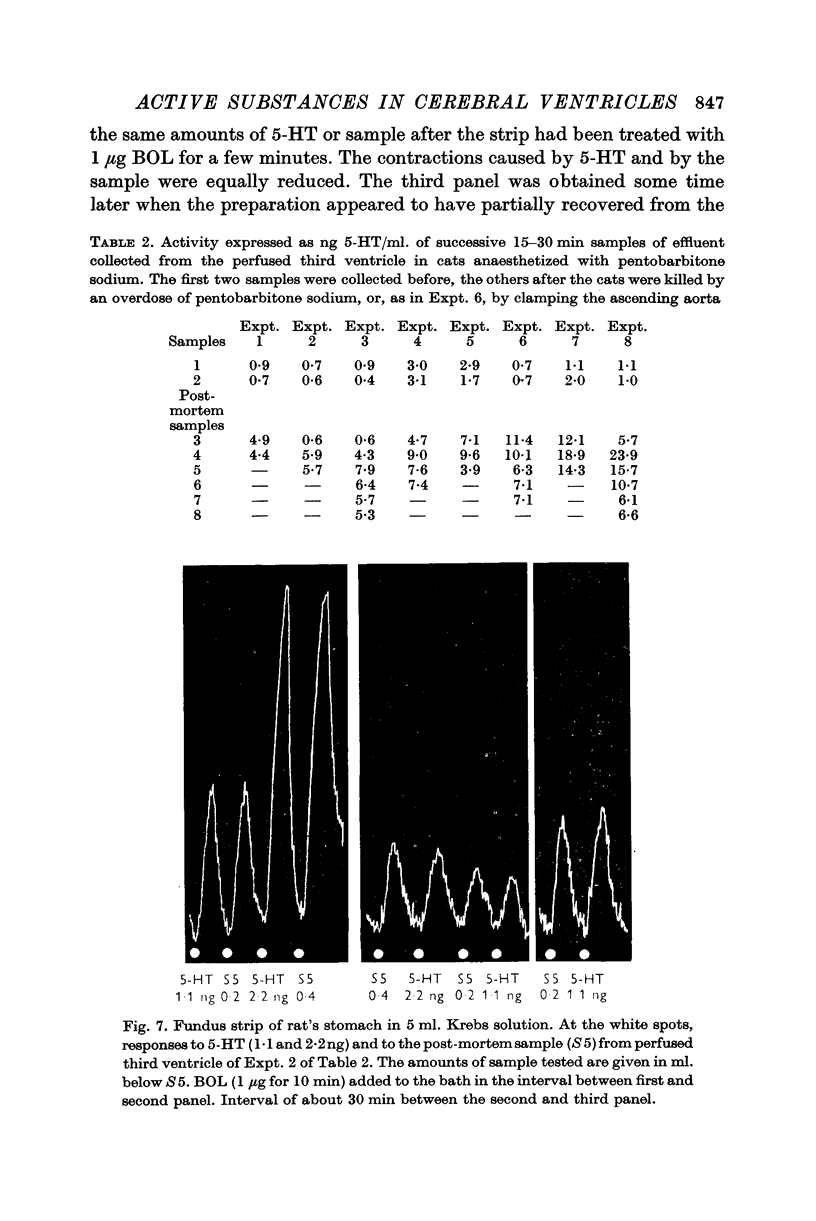
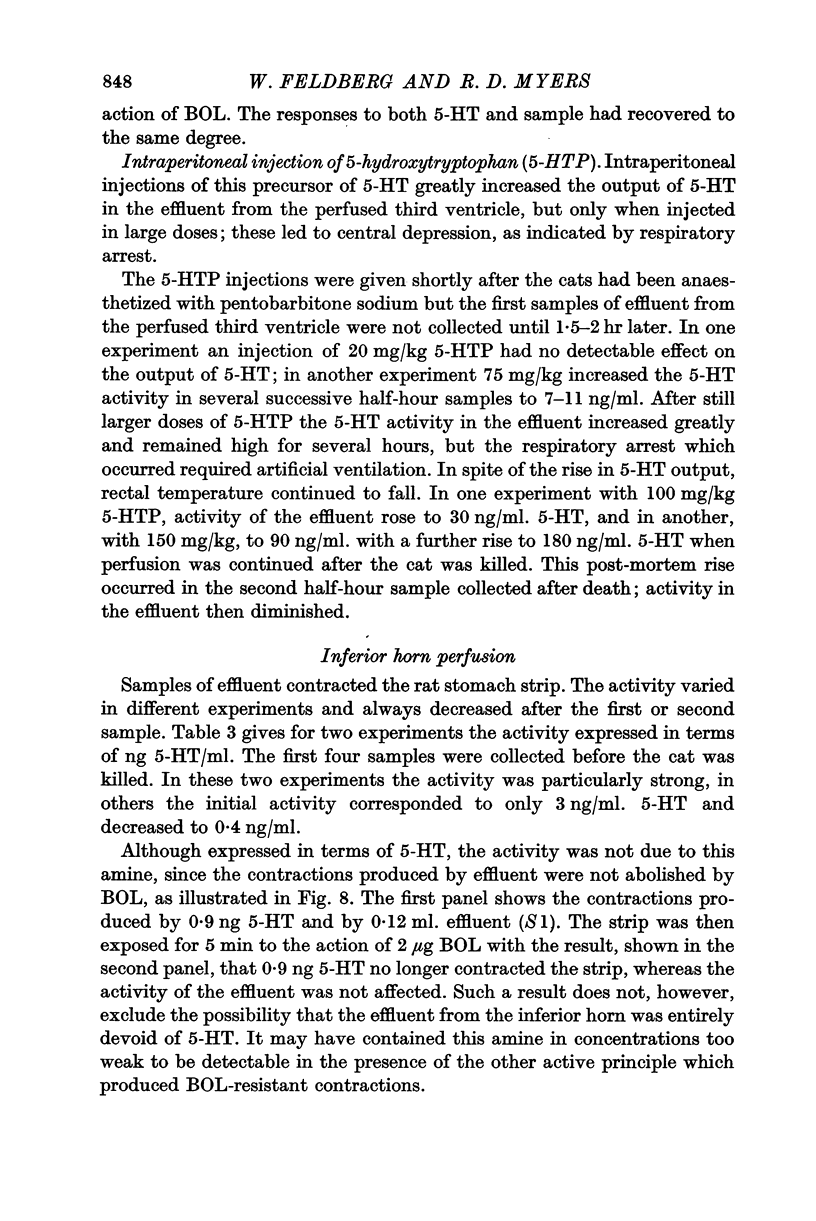
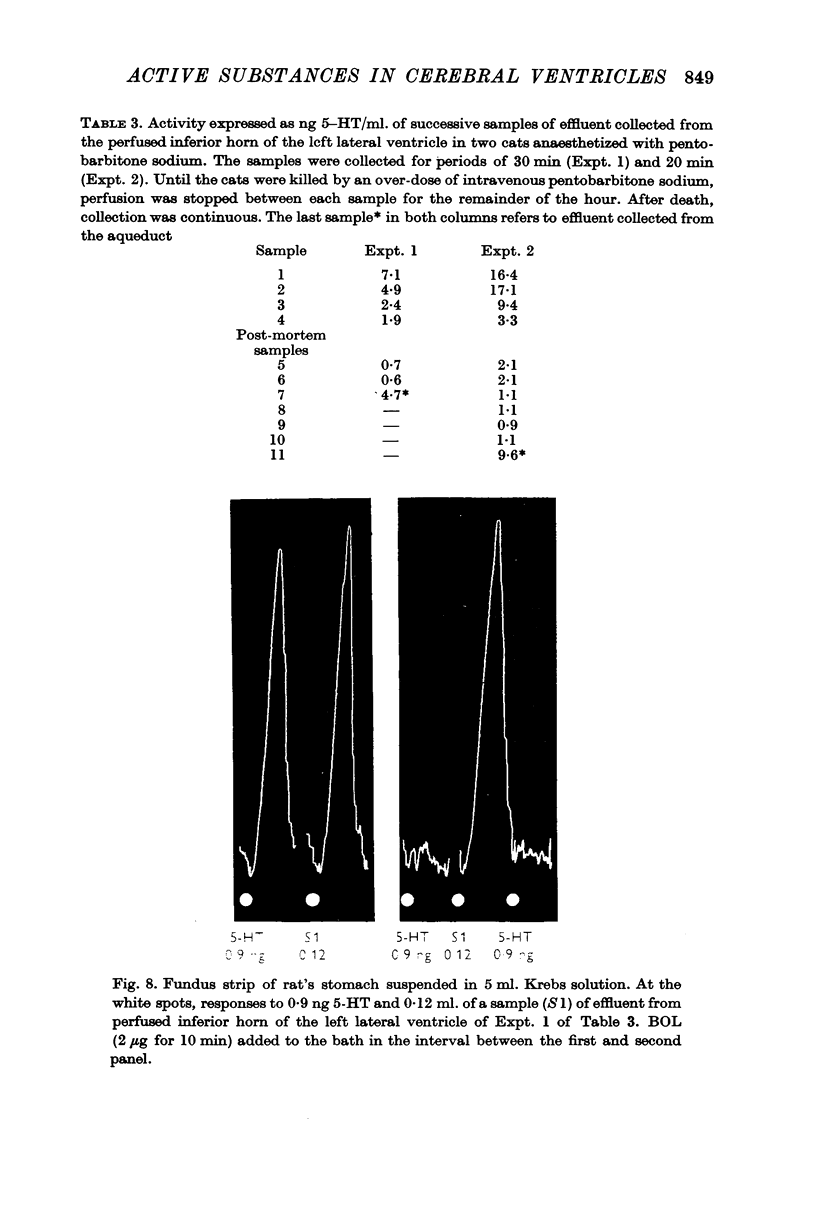
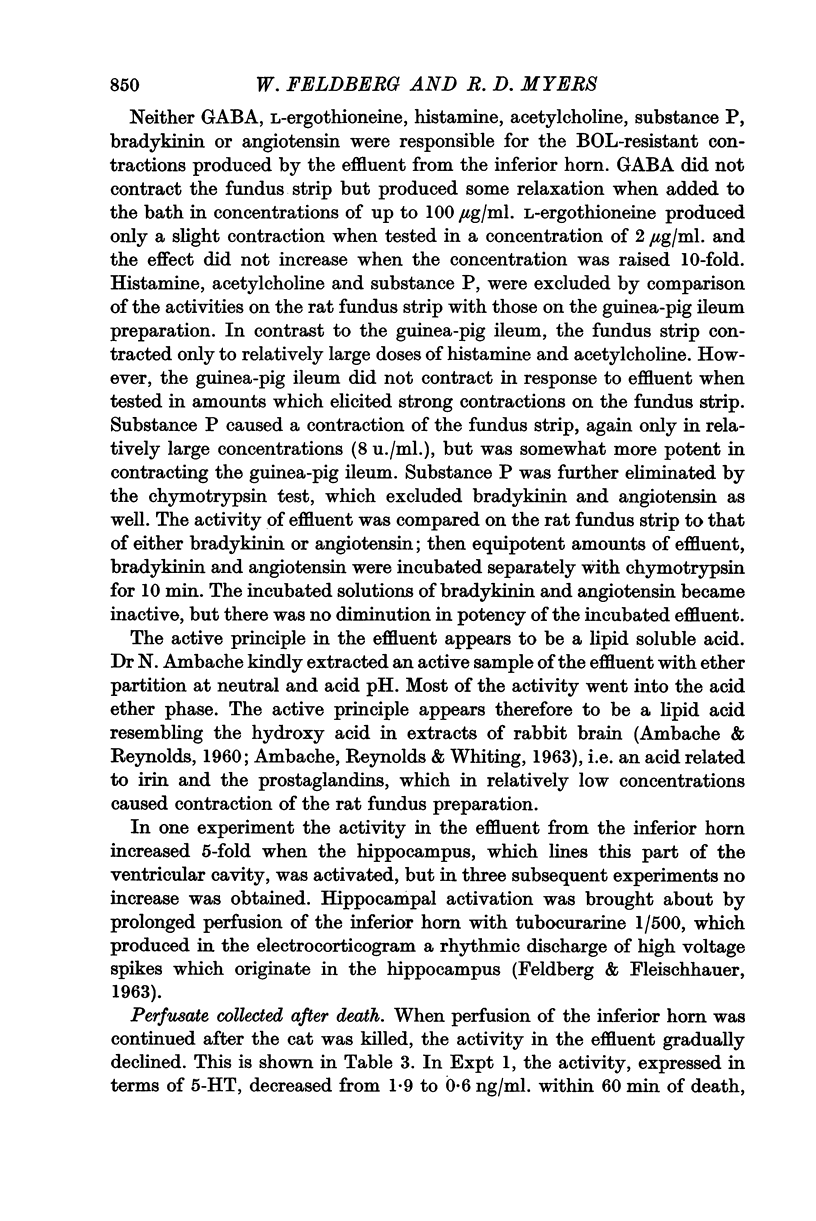


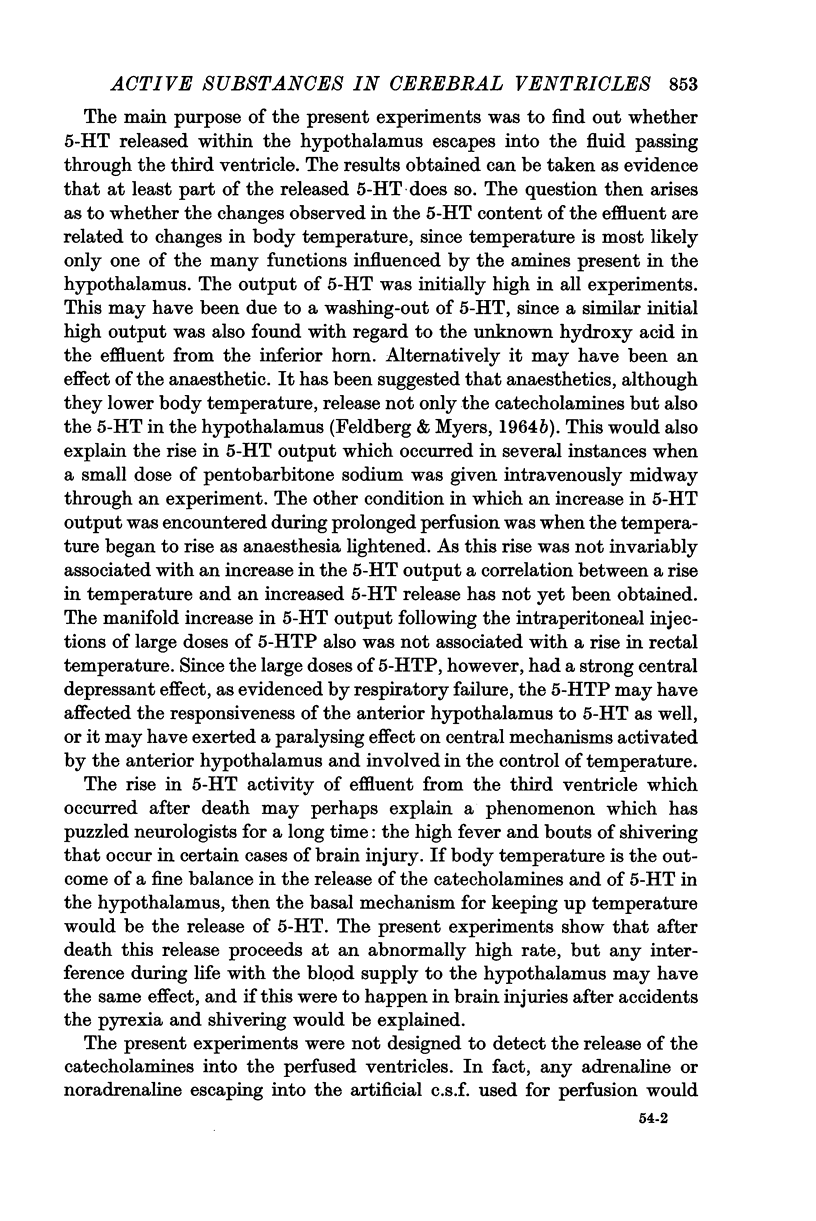
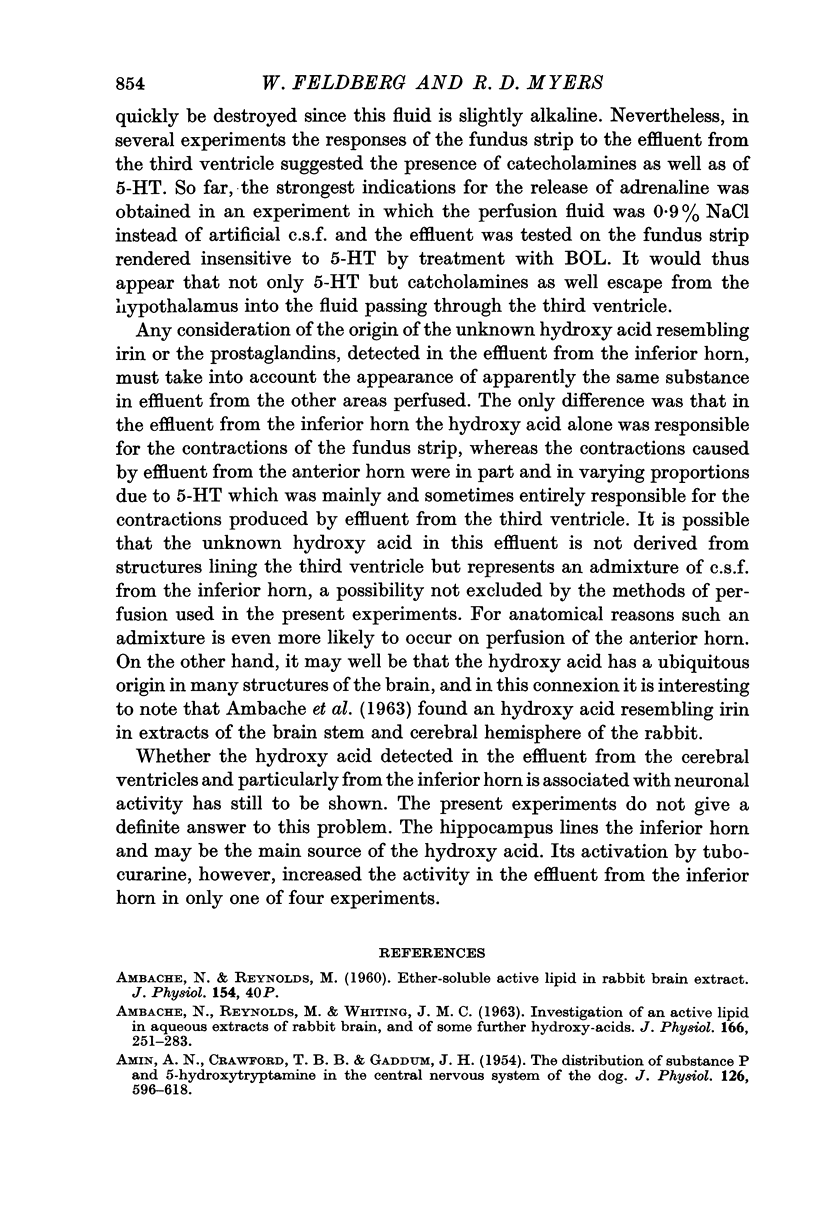
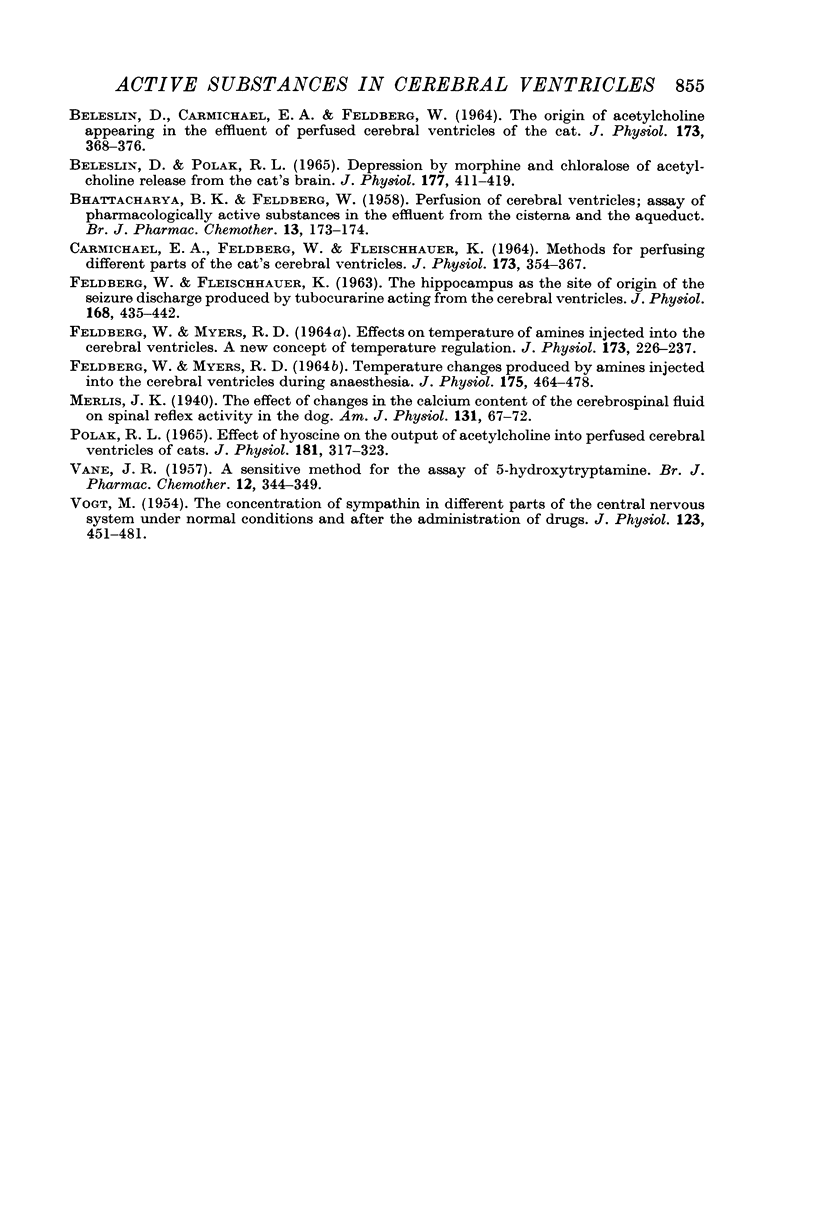
Selected References
These references are in PubMed. This may not be the complete list of references from this article.
- AMBACHE N., REYNOLDS M., WHITING J. M. Investigation of an active lipid in aqueous extracts of rabbit brain, and of some further hydroxy-acids. J Physiol. 1963 Apr;166:251–283. doi: 10.1113/jphysiol.1963.sp007104. [DOI] [PMC free article] [PubMed] [Google Scholar]
- AMIN A. H., CRAWFORD T. B., GADDUM J. H. The distribution of substance P and 5-hydroxytryptamine in the central nervous system of the dog. J Physiol. 1954 Dec 10;126(3):596–618. doi: 10.1113/jphysiol.1954.sp005229. [DOI] [PMC free article] [PubMed] [Google Scholar]
- BELESLIN D., CARMICHAEL E. A., FELDBERG W. THE ORIGIN OF ACETYLCHOLINE APPEARING IN THE EFFLUENT OF PERFUSED CEREBRAL VENTRICLES OF THE CAT. J Physiol. 1964 Oct;173:368–376. doi: 10.1113/jphysiol.1964.sp007462. [DOI] [PMC free article] [PubMed] [Google Scholar]
- BELESLIN D., POLAK R. L. DEPRESSION BY MORPHINE AND CHLORALOSE OF ACETYLCHOLINE RELEASE FROM THE CAT'S BRAIN. J Physiol. 1965 Apr;177:411–419. doi: 10.1113/jphysiol.1965.sp007600. [DOI] [PMC free article] [PubMed] [Google Scholar]
- BHATTACHARYA B. K., FELDBERG W. Perfusion of cerebral ventricles: assay of pharmacologically active substances in the effluent from the cisterna and the aqueduct. Br J Pharmacol Chemother. 1958 Jun;13(2):163–174. doi: 10.1111/j.1476-5381.1958.tb00212.x. [DOI] [PMC free article] [PubMed] [Google Scholar]
- CARMICHAEL E. A., FELDBERG W., FLEISCHHAUER K. METHODS FOR PERFUSING DIFFERENT PARTS OF THE CAT'S CEREBRAL VENTRICLES WITH DRUGS. J Physiol. 1964 Oct;173:354–367. doi: 10.1113/jphysiol.1964.sp007461. [DOI] [PMC free article] [PubMed] [Google Scholar]
- FELDBERG W., FLEISCHHAUER K. THE HIPPOCAMPUS AS THE SITE OF ORIGIN OF THE SEIZURE DISCHARGE PRODUCED BY TUBOCURARINE ACTING FROM THE CEREBRAL VENTRICLES. J Physiol. 1963 Sep;168:435–442. doi: 10.1113/jphysiol.1963.sp007201. [DOI] [PMC free article] [PubMed] [Google Scholar]
- FELDBERG W., MYERS R. D. EFFECTS ON TEMPERATURE OF AMINES INJECTED INTO THE CEREBRAL VENTRICLES. A NEW CONCEPT OF TEMPERATURE REGULATION. J Physiol. 1964 Sep;173:226–231. doi: 10.1113/jphysiol.1964.sp007454. [DOI] [PMC free article] [PubMed] [Google Scholar]
- FELDBERG W., MYERS R. D. TEMPERATURE CHANGES PRODUCED BY AMINES INJECTED INTO THE CEREBRAL VENTRICLES DURING ANAESTHESIA. J Physiol. 1964 Dec;175:464–478. doi: 10.1113/jphysiol.1964.sp007527. [DOI] [PMC free article] [PubMed] [Google Scholar]
- Polak R. L. Effect of hyoscine on the output of acetylcholine into perfused cerebral ventricles of cats. J Physiol. 1965 Nov;181(2):317–323. doi: 10.1113/jphysiol.1965.sp007763. [DOI] [PMC free article] [PubMed] [Google Scholar]
- VANE J. R. A sensitive method for the assay of 5-hydroxytryptamine. Br J Pharmacol Chemother. 1957 Sep;12(3):344–349. doi: 10.1111/j.1476-5381.1957.tb00146.x. [DOI] [PMC free article] [PubMed] [Google Scholar]
- VOGT M. The concentration of sympathin in different parts of the central nervous system under normal conditions and after the administration of drugs. J Physiol. 1954 Mar 29;123(3):451–481. doi: 10.1113/jphysiol.1954.sp005064. [DOI] [PMC free article] [PubMed] [Google Scholar]


